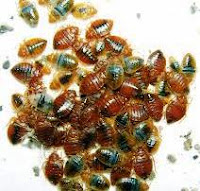
 Exclusive breastfeeding for six months wards off baby infections, further evidence suggests.
Exclusive breastfeeding for six months wards off baby infections, further evidence suggests.Regardless of other factors, such as good health care and vaccination programmes , breastfeeding still gives babies a boost, say Greek researchers.
They say it is the composition of breast milk that helps babies fight infections.
The findings, from a study of 1,000 vaccinated infants, are published in Archives of Diseases in Childhood.
Researchers say the benefit only comes with exclusive breastfeeding - mixing breast and bottle will not achieve the same.
World experts already recommend that infants are exclusively breastfed for at least the first six months of life.
For the study, the researchers tracked the health of 926 infants for a period of 12 months, recording any common infections these babies had during their first year of life.
All the newborns were routinely vaccinated and had access to a high standard of healthcare.
Almost two-thirds of mothers were breastfeeding at one month, but this figure dropped to just under a fifth at six months.
Overall, 91 of the infants were exclusively breastfed for a full six months.
Subsequently, these infants had significantly fewer common infections during their first year of life than their peers who were either partially breastfed or not breastfed at all.
These included respiratory and ear infections, as well as thrush.
And the infections they did pick up were less severe, even after adjusting for other factors that might influence infection risk, such as number of siblings and exposure to environmental tobacco smoke.
Professor Emmanouil Galanakis and his team say it is the composition of breast milk that explains their findings.
Breast milk contains antibodies passed from the mother, as well as other immunological and nutritional factors that help the baby fight off infections.
"Mothers should be advised by health professionals that, in addition to all the other benefits, exclusive breastfeeding helps prevent infections in babies and lessens the frequency and severity of infectious episodes," the researchers say.
Janet Fyle of the Royal College of Midwives said: "This research is very welcome and adds to the growing weight of evidence about the many benefits of breastfeeding.
"We know that breastfeeding is the default method of infant feeding for babies; good for mothers and good for the health of the nation. That is why we need to continue our efforts to ensure that we maintain a high rate of breastfeeding in the UK.
"The UK needs to see breastfeeding as a normal process, and to move away from some of the outdated and negative stigma that is depressingly still attached to it, specifically breastfeeding in public."
The UK needs to see breastfeeding as a normal process, and to move away from some of the outdated and negative stigma that is depressingly still attached to it, specifically breastfeeding in public: said Janet Fyle Royal College of Midwives


























